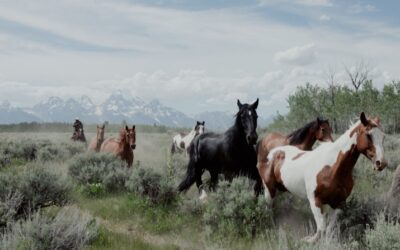This story comes to KHOL through the Rocky Mountain Community Radio collaborative.
At the chalky slopes of the Book Cliffs in southeastern Utah, Christine Sandbach, a graduate student at Utah State University (USU), has a beaver in a cage that she’s trying to get a read on.
“Whenever we interact with them, we record their behavior. So, she just kind of turned away when I opened up the cage cover. So, that would be fearful,” Sandbach said, standing in a leafy oasis along the shallow Price River.
Sandbach is one of a number of modern-day trappers searching the state for beavers in a partnership between government agencies and university researchers. But they aren’t after pelts. Instead, they’re using the semi-aquatic animal to lessen the effects of drought in the region.
In Sandbach’s time trapping, she’s gotten to know quite a few of the large rodents.
“It’s interesting, they really do have different behaviors. We just released our last one… He was super aggressive like the whole time. He was a big male. He was kind of scary. He would hiss and lunge at us,” she said.
But the beaver today is calm with her back turned. Sandbach named her Ice Baby after finding her in the cold waters of a high-elevation canyon. Ice Baby had contributed to an impressive complex, which the land’s owner thought was getting out of control.
Although Ice Baby now finds herself some 60 miles south of her home waters, she’s actually lucky.
“Before this project, usually the solution would be lethal removal,” Sandbach said.
Now the hope is that Ice Baby will go to work for the state. Prolonged drought is drying up sections of this river and threatening its fish, including three endangered species. Sandbach and others think beavers can help.
“Beavers are great for the environment,” said Julie Young, a professor at USU working on this project. “Everything kind of benefits or has the potential to benefit when there’s beavers around creating more marsh habitats.”
Beavers build dams to create ponds they can dip into and avoid predators. On this stretch of the Price River, there are a number of human-made beaver dam analogs (BDAs) to help Ice Baby get started.
“The idea is that maybe if we have beavers out there and they have BDAs… they will dam up some water and let it trickle year round,” Young said.
And that will help the fish. Young said researchers around the country are studying beaver benefits. For example, in Colorado beaver-made wetlands have acted as breaks for wildfires.
This project is a bit of a test case. After all, it’s not an area you might think to find the animal.
“What’s unique about this is it is a desert river system. And that’s more rare,” Young said. She said there are some really nice dam complexes on the nearby San Rafael River. “And that’s what the Price River could look like if beavers are in sufficient number and decide to dam it up.”
There once were up to 200 million beavers in North America. But the fur trade of previous centuries decimated that population. Luckily for beavers, the price of their pelts has plummeted. Top hats made from their fur fell out of fashion a while ago.
There are still only 10 to 15 million beavers left on the continent. As the West’s population has expanded, beavers are once again in conflict with humans—this time with landowners.
That’s where Nate Norman comes in. He’s another modern-day trapper.
“In a lot of ways it’s similar to the old-time trappers. We’re looking for the signs of where the beavers are moving and where they’re active and then luring them into areas with either food or scent,” said Norman, a biologist with the Beaver Ecology and Relocation Center at USU.
Although, unlike past mountain men, he’s using non-lethal methods. He said the state passes on reports of nuisance beavers and he’ll reach out to property owners to see if they’d prefer relocation to extermination. He also educates them on the usefulness of beavers.
“We’ve had some successes where people have been okay to leave the beaver on their site and not actually have them removed,” Norman said.
He said in the last five years more landowners have had a change of heart toward beavers. During ongoing drought, ranchers have especially come around to the benefits of beavers building stock ponds to provide water for cattle.
“They realized that when they go out and build a stock pond and it flows out in the springtime, they’ve got to go back up there and fix it. But if a beaver builds a pond and it blows up in the springtime, the beaver[s] go fix it,” Norman said.
Beavers also help to grow riparian vegetation used for animal feed—important as well during a drought.
Back at the Price River, Ice Baby is acting a little less fearful. She’s in view of the water and gnawing at her cage. Sandbach points out an artificial dam.
“So, that is a BDA right there. That was built last year. They used to have a ton of juniper and stuff and were way bigger but they’ve gotten blown out with floods,” said Sandbach.
Sandbach said that workers built around 70 BDAs last year in the state. If Ice Baby likes this spot then her job is done.
“That’s sort of the goal here is to have this feedback. You build the BDAs then translocate beavers. The BDAs make the habitat better for the beavers. And then in turn the beavers maintain their BDAs. So, there’s no extra resources going into that,” Sandbach said.
Sandbach opens the cage and Ice Baby waddles down the dirt path to the water. She slips into the shallow river and gracefully swims away—not even a look back in gratitude.
Sandbach hopes she sticks around, though, and makes a home of it.





